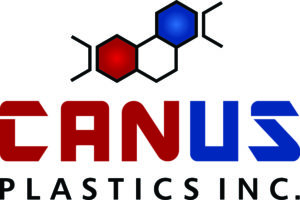Simple Thermoforming Projects You Can Try

Thermoforming is a fun way to shape plastic into all sorts of useful and creative items. This process involves heating plastic sheets until they become soft and then forming them over a mould to achieve the desired shape. It’s a versatile technique used to make everything from protective gear to intricate display cases.
Even though it sounds technical, thermoforming can be simple enough for anyone to try, including beginners and kids. With a bit of guidance and the right materials, you can start creating amazing projects right at home. Plus, it’s an exciting way to turn plain plastic sheets into something unique and functional.
Getting started with thermoforming can be a rewarding experience, whether you’re looking to dive into a new hobby or simply want to understand more about how everyday items are made. This hands-on activity not only sparks creativity but also provides a practical understanding of a popular manufacturing method. Let’s explore the basics of thermoforming and discover some cool project ideas you can start with.
Understanding Thermoforming: The Basics
Thermoforming is a straightforward way to turn plastic sheets into shaped objects by heating and stretching them over a mould. This method involves heating a plastic sheet until it becomes flexible. Once soft, the sheet is placed over a mould, and either vacuum or pressure is applied to help the sheet take the mould’s shape. After shaping, the plastic is cooled and solidifies into its new form.
The process is popular because it is efficient and versatile, making it easy to produce a variety of items. Thermoforming is used in many industries because it can create both simple and complex shapes quickly, often reducing production costs compared to other methods. This technique is ideal for both short production runs and high-volume manufacturing due to its efficiency and scalability.
Key steps in the thermoforming process include:
– Heating: The plastic sheet must be evenly heated for consistent shaping.
– Moulding: The mould plays a crucial role, determining the final shape.
– Cooling: Ensures the plastic retains its new form before being trimmed or finished.
Thermoforming is a flexible manufacturing method perfect for producing lightweight and durable plastic items, making it a valuable tool in product creation.
Creative Thermoforming Project Ideas
Thermoforming is a great way to explore creativity with plastic materials. Whether for fun or functional use, there are plenty of projects you can try with this versatile process. Here are some ideas to get you started:
1. Custom Planters: Design unique plastic planters for your home or garden. Choose different shapes and sizes to fit your gardening needs.
2. DIY Lampshades: Create modern and colourful lampshades. Use thermoformed plastic to mold artistic patterns that will light up your space beautifully.
3. Toy Models: Make toy cars or action figures. These can be educational and a fun way to experience the shaping process.
4. Personalized Signs: Design personalized signs for your room or office. Use bold colours and custom shapes to add flair to any space.
5. Kitchen Organizers: Create custom drawer inserts and organizers. Thermoforming allows for designing compartments that perfectly fit your kitchen items.
6. Protective Gear Cases: Design cases for your tools or gadgets. A sturdy and lightweight plastic form will keep your items safe.
These projects show how imaginative you can get with thermoforming, turning simple plastic sheets into useful and enjoyable objects. With the right tools and materials, you can bring your creative ideas to life, making practical items that reflect your personal style. Whether you’re a beginner or experienced, these projects stretch your capabilities in crafting with thermoforming.
Materials and Tools Needed for Thermoforming
To succeed in thermoforming projects, you need the right materials and tools. Start with selecting the appropriate type of plastic sheet. Common choices include acrylic, PET, and polycarbonate, each offering different characteristics and benefits. Choose based on your project’s durability and flexibility needs.
Essential tools and equipment for thermoforming include:
– Thermoforming Machine: This is the heart of the process, ensuring you can heat and mould the plastic accurately.
– Heat Gun: Handy for small adjustments and specific areas that need reshaping.
– Moulds: Custom or pre-made moulds are required to shape your plastic. They can be crafted from wood, metal, or plaster.
– Cutter or Trimming Tools: Used to remove excess plastic and refine the final product.
– Rulers and Measuring Tools: Essential for precise cutting and shaping.
For more advanced projects, you might consider a vacuum forming setup that requires additional vacuum pumps and frames. While not strictly necessary for simple projects, these tools enhance precision and efficiency.
Safety equipment such as gloves and goggles is also crucial to protect yourself from heat and sharp tools. Having a well-organized workspace with all necessary materials and tools readily available is a key step toward successful thermoforming projects.
Tips and Tricks for Successful Thermoforming Projects
Achieving great results in your thermoforming projects requires attention to detail and a few handy tips. Here are some tricks to ensure your projects are successful:
1. Preheat Evenly: Ensure even and consistent heating of the plastic sheet to avoid warping or uneven surfaces. Use a reliable thermostat to monitor temperatures.
2. Choose the Right Mould: Select or create moulds that are smooth and free from defects. Imperfections in moulds usually transfer to your final product.
3. Control Cooling: Let the formed plastic cool gradually to prevent cracks and ensure strength. Sudden temperature changes can lead to brittleness.
4. Trim with Care: Use precision cutting tools for trimming to keep edges smooth and neat. Proper trimming enhances the appearance and fit of your product.
5. Test and Adjust: Run small test forms before full production to check for any issues. This allows you to make necessary adjustments without wasting materials.
Regular cleaning and maintenance of all equipment prolongs their life and keeps your projects running smoothly. With practice and attention to these details, you’ll find thermoforming both rewarding and exciting, allowing you to create a multitude of innovative items.
Conclusion
Thermoforming offers vast possibilities for crafting useful and creative plastic items. With simple techniques and the right tools, both beginners and seasoned creators can produce high-quality products. This process is not only cost-effective but also adaptable, making it suitable for various projects, from household items to professional displays.
Getting involved in thermoforming can be a satisfying hobby or a valuable skill for business purposes. Understanding the materials and mastering the process can lead to improvements in product quality and efficiency. Whether it’s experimenting with new designs or finding ways to optimize production, thermoforming invites innovation at every stage.
As you develop your skills, you’ll find that thermoforming opens the door to endless creativity and problem-solving approaches. It’s a powerful method for turning ideas into tangible products, benefiting from both simplicity and sophistication.
Explore the world of thermoforming with Canus Plastics Inc., a plastic manufacturing company, and transform your concept into reality. Our expertise in plastic product manufacturing is here to support your creative journey. Discover how we can assist you with high-quality materials and professional guidance to boost your projects with ease and proficiency.

